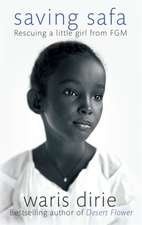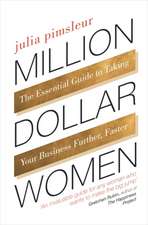Women in Global Science: Advancing Academic Careers through International Collaboration
Autor Kathrin Zippelen Limba Engleză Paperback – 20 mar 2017
Kathrin Zippel looks to the STEM fields as a case study, where gendered cultures and structures in academia have contributed to an underrepresentation of women. While some have approached underrepresentation as a national concern with a national solution, Zippel highlights how gender relations are reconfigured in global academia. For U.S. women in particular, international collaboration offers opportunities to step outside of exclusionary networks at home. International collaboration is not the panacea to gendered inequalities in academia, but, as Zippel argues, international considerations can be key to ending the steady attrition of women in STEM fields and developing a more inclusive academic world.
| Toate formatele și edițiile | Preț | Express |
|---|---|---|
| Paperback (1) | 206.41 lei 6-8 săpt. | |
| Stanford University Press – 20 mar 2017 | 206.41 lei 6-8 săpt. | |
| Hardback (1) | 632.93 lei 6-8 săpt. | |
| Stanford University Press – 20 mar 2017 | 632.93 lei 6-8 săpt. |
Preț: 206.41 lei
Nou
39.51€ • 41.13$ • 32.53£
Carte tipărită la comandă
Livrare economică 01-15 februarie 25
Specificații
ISBN-10: 1503601498
Pagini: 224
Dimensiuni: 152 x 229 x 18 mm
Greutate: 0.34 kg
Editura: Stanford University Press
Colecția Stanford University Press
Recenzii
Notă biografică
Cuprins
Chapter 1 engages the reader by explaining the key questions, arguments, and theoretical concepts for the book. What happens when academic work globalizes, what kind of international research collaborations do STEM faculty engage in? It introduces the core argument that globalization of academia is a gendered process as global science is organized in gendered ways, such as the framework of glass fences and .edu bonus. This chapter also contextualizes U.S. leadership in global science and challenges to it by providing cross-nationally statistical information about current developments in the globalization of science and technological knowledge, including international collaborations, co-authorships, and R&D spending.
Chapter 2 examines the institutional context (U.S. funding institutions and universities) for faculty decisions about engagement in international collaboration and research. By analyzing U.S. faculty constructions of (global) science, it identifies how U.S. institutions position themselves globally. Part of this dynamic is the construction of international collaboration as an activity for elite faculty. And although claims to U.S. scientific supremacy persist, there also the call for "national interest" in maintaining its global position. The chapter further investigates the contrast between faculty perceptions of international research and collaborations as extremely positive¿a highlight of their careers¿and their experiences of lack of institutional recognition and support. Not surprisingly, given these competing imperatives, faculty members use contradictory rationales to explain why international academic work is meaningful to them in the context of constructions of U.S. superiority, competition, the universality of scientific work, and international research as a "risky" activity.
This chapter explains the benefits offered to women in international academic work. Cultural schemas for U.S. scientists reveal an .edu bonus that depicts U.S. scholars as competent and overshadows stereotypes of women as less so. Academics marginalized by gender, minority background, or field can benefit from the .edu bonus, drawing on the positive aspects of being a U.S. scholar in an international environment. Being a woman and a foreigner is thus a positive combination rather than an accumulation of disadvantages. Persistent stereotypes and myths hold that U.S. women scientists are not effective in cultural environments where no native women hold equal positions of power. But women scientists report that they are seen foremost as foreigners and treated as such, making their gender status less salient. This .edu bonus can serve to expand networks internationally and demonstrates the importance of analyzing the intersection of gender and foreigner status of U.S. scientists.
Chapter 4 focuses on glass fences, the various gendered challenges in international research collaborations. Academia is still organized in gendered ways, and gender is embedded in the international collaboration policies and practices of nation-states, funding agencies, universities, and researchers. The chapter illustrates how these fences emerge in specific international work settings and research practices, examining in particular the implications for women's access to and opportunities to participate in, organize, and operate international conferences, research sites, and fieldwork. Fences emerge when institutions and individuals construct safety abroad as a gendered issue. (Global) academia is gendered through the organization of academic work around norms, values, and expectations that fit the ideal of an elite male global scientist with the personal, social, and academic resources to climb fences. The very structure of international collaboration thus privileges men over women and re-creates gendered inequalities in academia, globally and in the United States.
This chapter challenges the conventional wisdom that family barriers make it impossible for faculty to engage in international collaborations and mobility. Despite discourse that suggests children amplify family burdens for international research for mothers in particular, this chapter debunks the notion that families (meaning young children) construct an insurmountable fence for women and hinder international work only for mothers. Instead, diverse family commitments in various constellations can potentially be constraining, but they can also motivate and even support research abroad. Faculty with international family ties might have extra incentive to spend time in other countries and forge transnational academic careers, while "portable" or "supportive" partners (or lack thereof) can be another important factor in individual mobility and the ability to engage in international collaborations.
This chapter considers implications for institutions. Funding agencies and universities need to design internationalization strategies that recognize the diversity of both international research collaborations and their participants and take gender inequalities at the international and national level into account. The chapter suggests concrete ways to support international research collaborations that are inclusive of women, for example, being transparent about support allocation, eliminating obstacles and fences through bureaucratic procedures and policies, and "broadening participation" along demographic lines.









